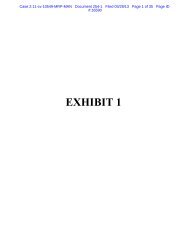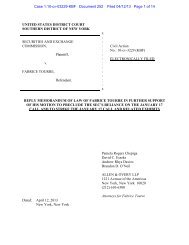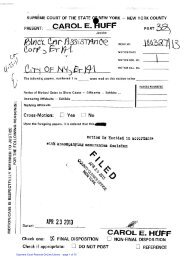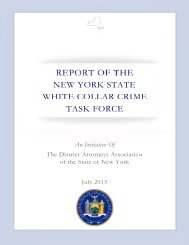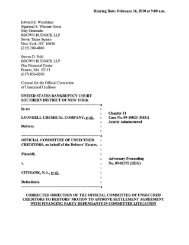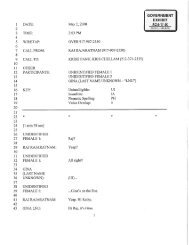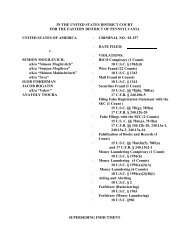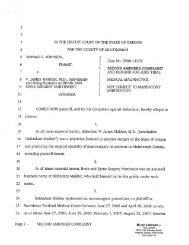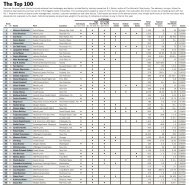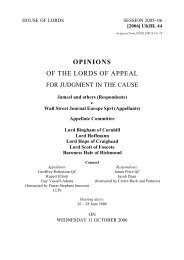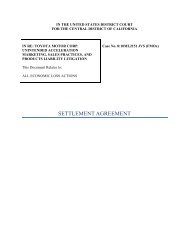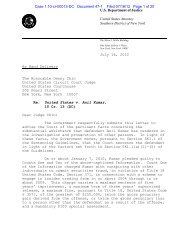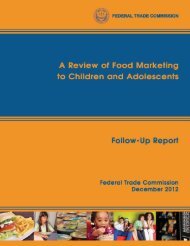Salz Review - Wall Street Journal
Salz Review - Wall Street Journal
Salz Review - Wall Street Journal
You also want an ePaper? Increase the reach of your titles
YUMPU automatically turns print PDFs into web optimized ePapers that Google loves.
<strong>Salz</strong> <strong>Review</strong><br />
An Independent <strong>Review</strong> of Barclays’ Business Practices<br />
222<br />
Appendix I – Selected Bank Financial Ratios<br />
Leverage<br />
‘Leverage’ is a capital ratio commonly used to compare banks’ capital structure. Leverage is<br />
defined as the corporation’s total assets (or sometimes risk weighted assets) divided by the<br />
amount of equity (or sometimes regulatory capital) used to support it.<br />
Over the decade to the financial crisis, banks have been inclined to increase their leverage.<br />
Commentators have argued that this occurred for a number of reasons, including taking<br />
advantage of rising asset prices to meet shareholders’ rising return on equity expectations<br />
and also because Basel II capital rules permitted more leverage. A study from the Financial<br />
Stability Committee 315 indeed shows that, if the aggregate banks’ leverage had been<br />
constant at the average 1990s level of around 25 times, banks would have achieved their<br />
new target levels of return on tangible equity (RoTE) in fewer than half of the past thirty<br />
years and not once since 2004. ‘Excessive’ banks’ leverage, combined with increased<br />
wholesale funding, has often been quoted as one of the core root causes of the current<br />
financial crisis.<br />
During this period covered by this <strong>Review</strong>, Barclays was one of the most highly leveraged<br />
UK banks. Its leverage rose from around 20 in 2000 to more than 37 in 2007, and this<br />
increased to 43 when the financial crisis hit in 2008, making it the most highly leveraged<br />
UK bank in those years. In 2012, Barclays’ leverage fell back to 24, but was still the highest<br />
among the major UK banks.<br />
Effect of leverage on UK banks’ return on tangible equity, 1980 – 2011<br />
40%<br />
30%<br />
20%<br />
10%<br />
0%<br />
1980 1982 1984 1986 1988 1990 1992 1994 1996 1998 2000 2002<br />
-10%<br />
Mean return on tangible equity<br />
-20%<br />
Mean return on tangible equity implied by 1990 leverage<br />
-30% Mean target return on tangible equity<br />
2004<br />
2006<br />
2008<br />
2010<br />
Note: Data is backwardly consistent sample of institutions providing banking services in the UK in 2010. The sample<br />
includes the following financial groups: Barclays, Bradford & Bingley, HSBC, LBG, National Australia Bank,<br />
Nationwide, Northern Rock, RBS and Santander UK<br />
Source: Financial Stability Report, Bank of England, June 2011<br />
315 See: Bank of England, interim Financial Policy Committee, Financial Stability Report, June 2011, p. 36.



